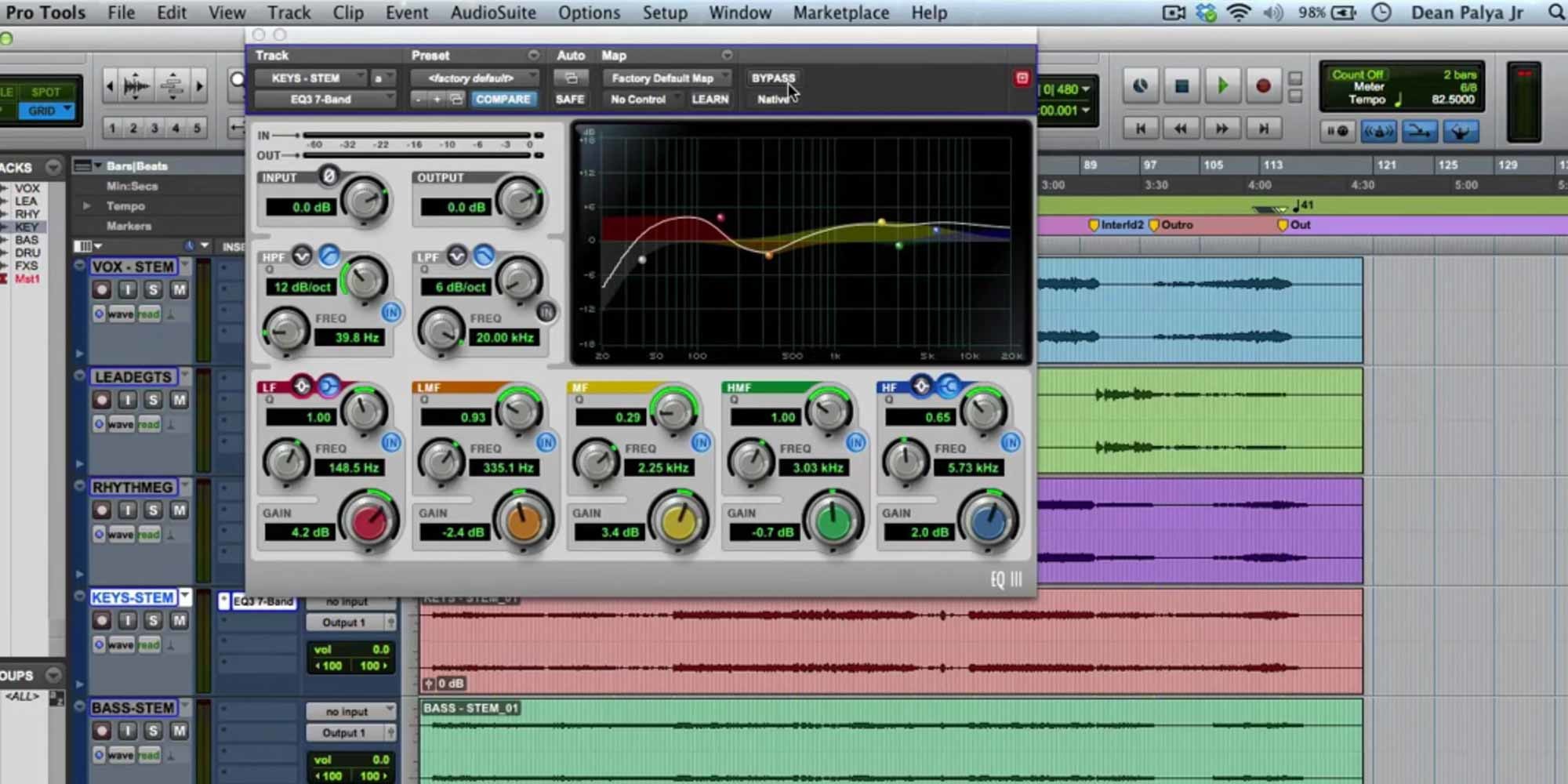On Tracks: What Type of EQ Should I Use and Why?
There are basically two ways in which to use equalization: to boost desirable frequencies and to cut undesirable frequencies.
But which are which?
Boosting or cutting any one frequency affects that frequency’s relationships to every other frequency, often in unpredictable and sometimes undesirable ways.”
For example if your mix sounds a little dull, you might try boosting some of the highs, which may help. But it is also possible that cutting some of the upper mids, would bring greater clarity to the highs, resulting in a more open sound. Bear in mind that when mixing several sounds, boosting or cutting any one frequency affects that frequency’s relationships to every other frequency, often in unpredictable and sometimes undesirable ways.
In other words, changing a single thing changes everything.
You have been warned.
Here, I’ll briefly discuss the most common types of equalizers and give an example or two of their uses, as well as present a few elementary aphorisms that have proven their utility over time.
Parametric EQ
True parametric equalizers provide control over three parameters: frequency, gain, and Q or bandwidth. Technically, Q and bandwidth are not identical, but they describe the same thing.
The frequency control selects the center frequency to be boosted or cut, and the gain control determines the amount of boost or cut in decibels or dB. For example, one might boost 4kHz by 3dB. The Q control determines the width of the affected range from broad (a wide bell shape) to very narrow (a pointy bell shape). So, if you boost 4kHz by 3dB with a wide Q setting, frequencies adjacent to 4kH that fall within that wide bell will also be affected, whereas with a narrow Q setting, 4kHz will be pinpointed and the adjacent frequencies will be relatively unaffected.
A “semi-parametric EQ” has frequency and gain controls, but the Q or bandwidth is fixed. These are sometimes called “sweepable” EQs. A “quasi-parametric EQ” is similar, but offers a choice of several fixed Q or bandwidth values.
Multiband Parametric EQs
Although there are many parametric equalizers that only affect a single frequency, the most common EQ plugins have about five bands, or the equivalent of five parametric EQs in one. The standard configuration for each band is as a “peaking EQ,” though often the lowest and highest bands may also be configured as “shelf EQs” that boost or cut the frequencies below or above a selected cutoff point. Some multiband equalizers also include dedicated high-pass and low-pass filters.
Ex. 1) Avid EQ III
For instance, the Avid EQ III that is included in Pro Tools 11 (Ex. 1) is a five-band parametric EQ that also has high-pass and low-pass filters. In our example, the high-pass filter is cutting all of the frequencies below 30Hz by 24dB per octave, and the low-pass filter is cutting all of the frequencies above 13kHz by the same amount. The low-mid-frequency band is boosting 200Hz by 4dB with a narrow Q (10.00) and the high-mid-frequency band is cutting 2kHz by 4.9dB with a wider Q (2.00).
Graphic EQ

Ex. 2) Universal Audio API 560 plugin
Graphic equalizers are familiar to nearly everyone and typically have between seven and 31 frequency bands. A great example is the Universal Audio API 560 plugin [Ex. 2], which models the classic ten-band hardware unit. It incorporates API’s proprietary “Proportional Q” that narrows the Q as you increase or decrease the gain.
Everyday Usage
Most common equalization tasks may be accomplished using a single or multiband parametric EQ. Say you have a snare drum that makes an annoying ringing sound and could also use a bit more heft. Configure a band of the EQ to boost by about 8dB with the narrowest Q possible and sweep the frequency range until the annoying frequency is isolated. Then, cut that frequency as needed, experimenting with the Q to find the optimal setting. Next, locate the “heft” frequency and reduce the boost to taste. That basic process is useful for equalizing pretty much any sound.
Now, your snare is sounding good, but the kick drum is flabby and lacks punch. You could remedy the situation using a parametric EQ, but you might also try the graphic EQ to add a little body to the “punchy” frequencies, and then use the high-pass filter to cut all of the frequencies below the point where useable thud becomes muddy flab. And if some high-frequency information such as cymbals is present and you don’t like it, you can use the low-pass-filter to cut all the highs above the range of the kick. You might even try using the graphic EQ to “notch” out that snare ring, as it may be more efficient than the parametric EQ.
Shelf EQ functions like a less-extreme high-pass or low-pass filter, with a more gradual “slope” or curve, and is good for general tone shaping at the low and high ends of the frequency spectrum. It is typically used to cut rather than boost. For example, on a vocal track there will be no useful vocal sound below a particular frequency, so gradually removing all of the audio information below that point will clean up the track by eliminating non-vocal noise, while not sounding unnatural.
FONTE: https://reverb.com/news/on-tracks-what-type-of-eq-should-i-use-and-why
Julian Ludwig é diretor do Pro Áudio Clube, produtora de áudio Jacarandá, Loc On Demand e Jacarandá Licensing. Trabalhou para empresas como: Guaraná Antartica, TV Gazeta, NET, Chivas Regal, FNAC, Prefeitura de São Paulo, Mukeca Filmes, Agência LEW’LARA TBWA, Agencia MPM, Agência Content House entre outras. Fez trilhas para programas de TV como: Internet-se (Rede TV), Você Bonita (TV Gazeta), Mix Mulher (TV Gazeta), Os Impedidos (TV Gazeta), Estação Pet (TV Gazeta), CQC (TV Band) Vinheta Oficial TV Gazeta, entre outras. Também atuou em vários longas e curtas metragens, incluindo mixagem em 5.1 e serviços de pós-produção.


